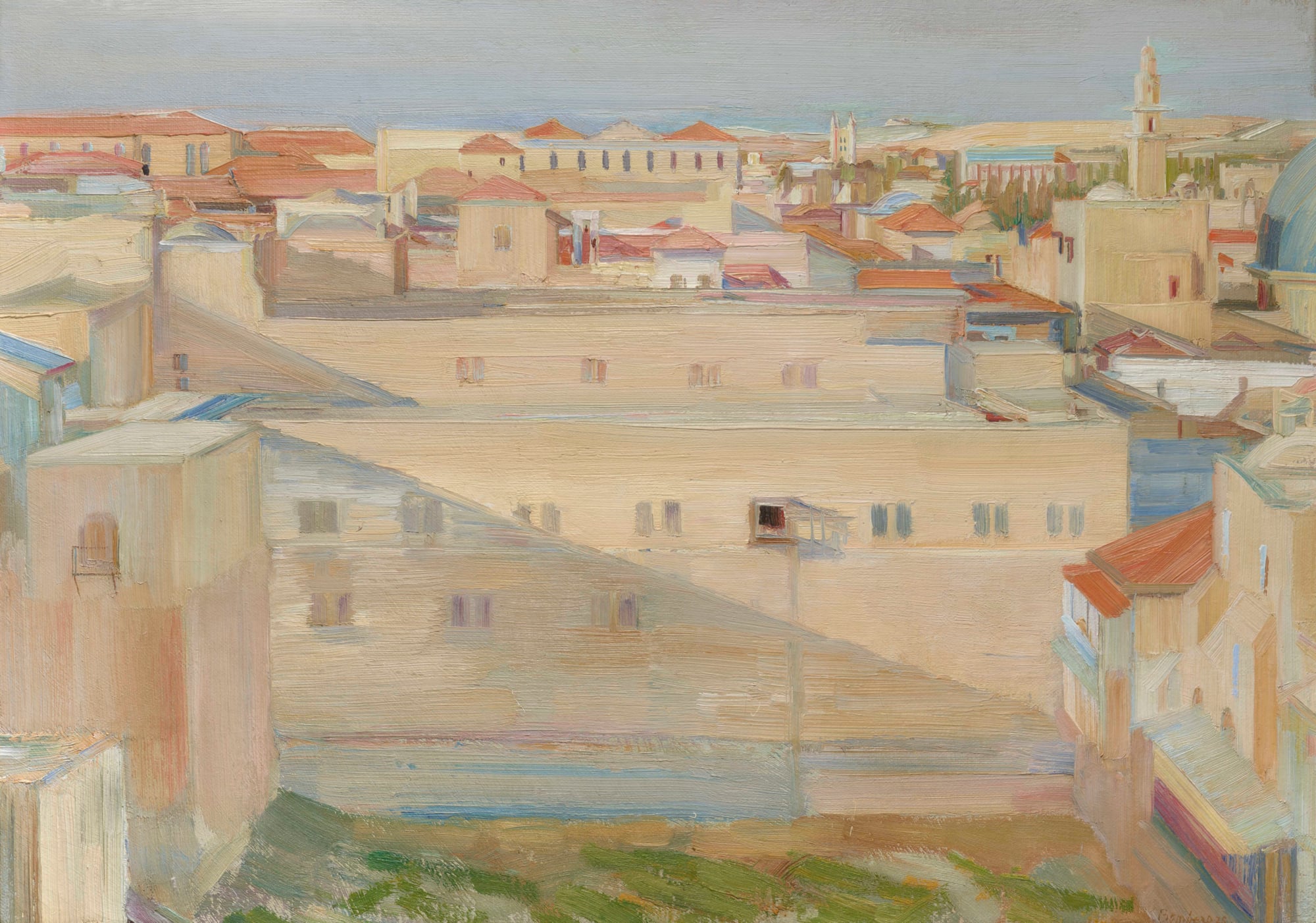

The artist’s wife, Lilian Bomberg
Anthony d’Offay, acquired from the above
Private Collection, to 2025
Anthony d’Offay, acquired from the above
Private Collection, to 2025
Richard Cork, David Bomberg, 1987, Yale University Press, pp.161-164.
The fifth child of a Polish immigrant leather worker, Bomberg spent his earliest years in Birmingham and then grew up in the Whitechapel area of London. He suffered considerable financial hardship while studying at evening classes given by Walter Byes (1869-1956) at the City and Guilds Institute from about 1905 to 1908 and by Walter Sickert at Westminster Art School from 1908 to 1910. With the help of John Singer Sargent and the Jewish Education Aid Society, he secured a place at the Slade School of Fine Art, London, in 1911. It was a period of dramatic change, stimulated in part by Roger Fry’s two Post-Impressionist exhibitions and the display of Italian Futurist works at the Sackville Gallery in 1912.
In 1923, Bomberg left London for Jerusalem. Organised by the artist Muirhead Bone and funded by the Palestine Foundation Fund, his brief was to record reconstruction projects in Palestine. Working en plein air, he responded to the intensity of the heat and sun he encountered in Jerusalem by creating incredibly precise works infused with the brilliance of light. It was here that he met the British Military Governor of Jerusalem, Sir Ronald Storrs. Storrs became an enthusiastic patron of Bomberg and funded his expedition to Petra in Jordan in 1924.
The present work depicts The Pool of Hezekiah in the Christian quarter of Jerusalem’s Old City, which he first painted upon his arrival two years earlier in 1923. The Pool was once a reservoir forming part of the city’s ancient water system. Bomberg kept a studio above the roof-tops, which allowed him to paint panoramic views of the city, and he soon became fascinated by the light and shadow cast across the city’s architecture throughout the day. Storrs describes the city as having ‘invincible and unutterable attraction’ which he entrusted to Bomberg to capture. Bomberg’s skilful use of impasto in his cityscapes prevents them from becoming too literal and lifeless. They capture the light and shadow of the changing daylight with a three-dimensional effect. Despite their preoccupation with the minutiae of the city’s architecture, they are still informed by a feeling of underlying structure. His charcoal drawings of Jerusalem concentrate on a skeletal summary of basic forms. This fundamental need for pictorial order ensures his 1925 Jerusalem cityscapes, even at their most detailed, are never merely picturesque, but rigorously studied, as can be seen in the present work.
In 1923, Bomberg left London for Jerusalem. Organised by the artist Muirhead Bone and funded by the Palestine Foundation Fund, his brief was to record reconstruction projects in Palestine. Working en plein air, he responded to the intensity of the heat and sun he encountered in Jerusalem by creating incredibly precise works infused with the brilliance of light. It was here that he met the British Military Governor of Jerusalem, Sir Ronald Storrs. Storrs became an enthusiastic patron of Bomberg and funded his expedition to Petra in Jordan in 1924.
The present work depicts The Pool of Hezekiah in the Christian quarter of Jerusalem’s Old City, which he first painted upon his arrival two years earlier in 1923. The Pool was once a reservoir forming part of the city’s ancient water system. Bomberg kept a studio above the roof-tops, which allowed him to paint panoramic views of the city, and he soon became fascinated by the light and shadow cast across the city’s architecture throughout the day. Storrs describes the city as having ‘invincible and unutterable attraction’ which he entrusted to Bomberg to capture. Bomberg’s skilful use of impasto in his cityscapes prevents them from becoming too literal and lifeless. They capture the light and shadow of the changing daylight with a three-dimensional effect. Despite their preoccupation with the minutiae of the city’s architecture, they are still informed by a feeling of underlying structure. His charcoal drawings of Jerusalem concentrate on a skeletal summary of basic forms. This fundamental need for pictorial order ensures his 1925 Jerusalem cityscapes, even at their most detailed, are never merely picturesque, but rigorously studied, as can be seen in the present work.